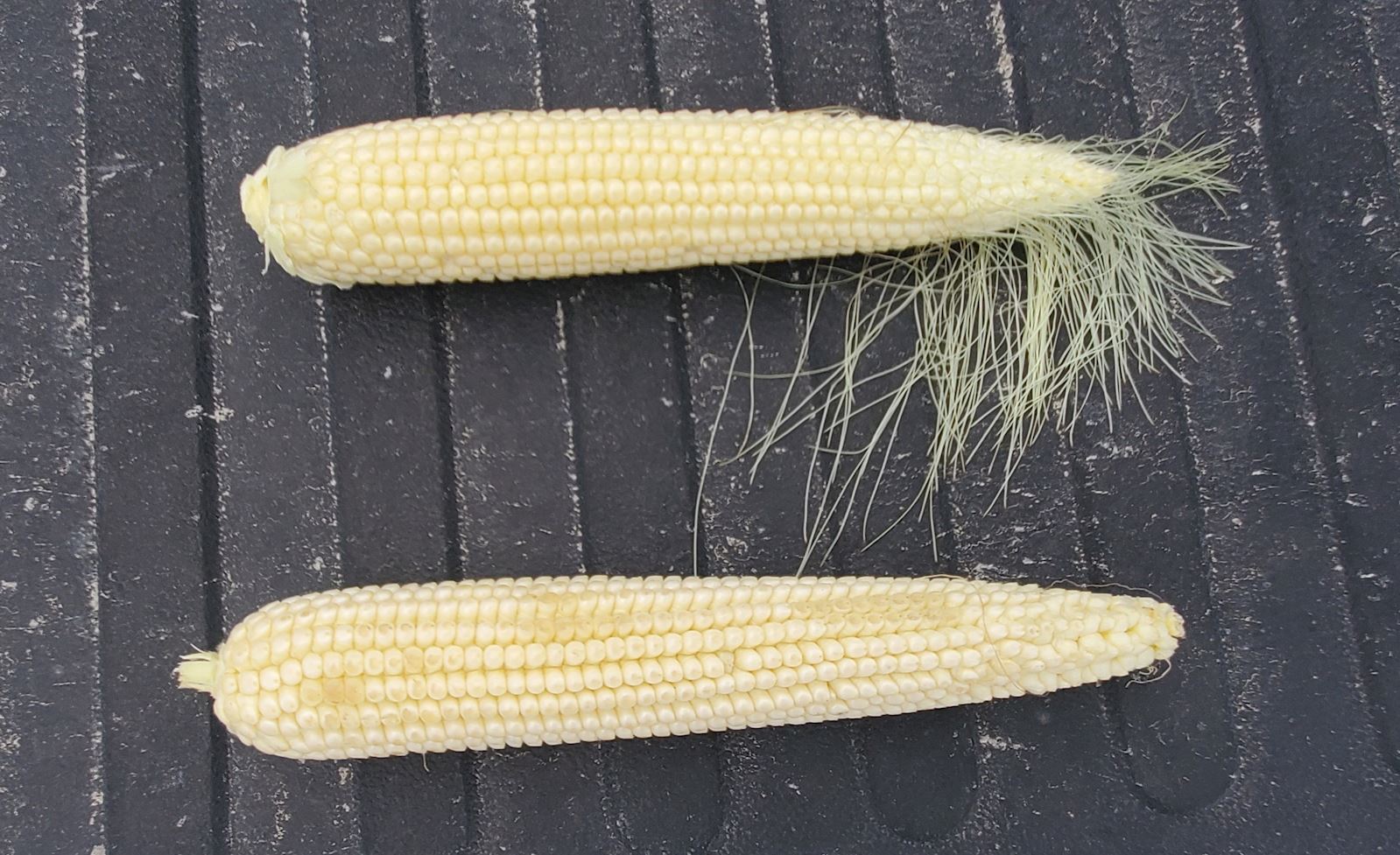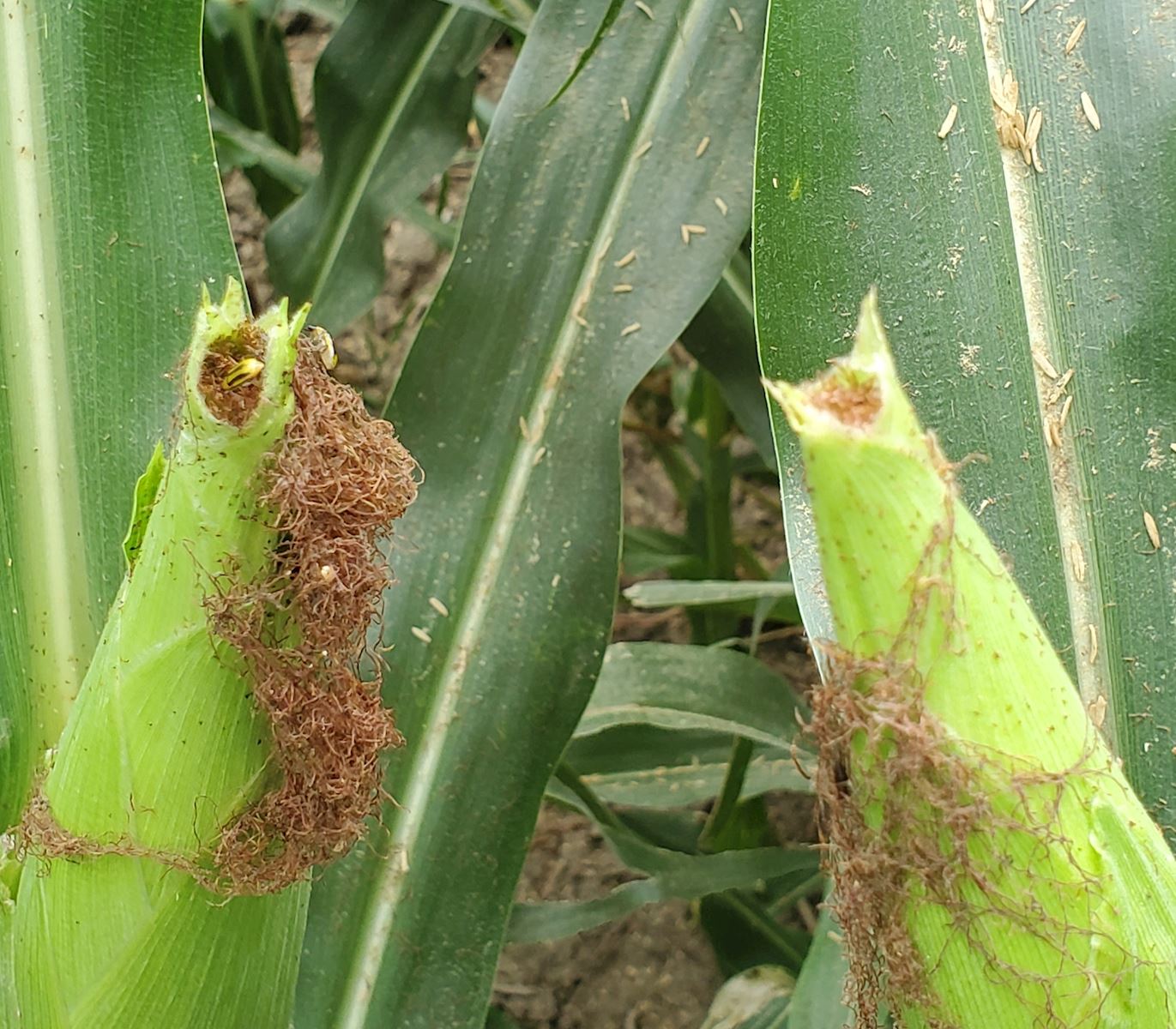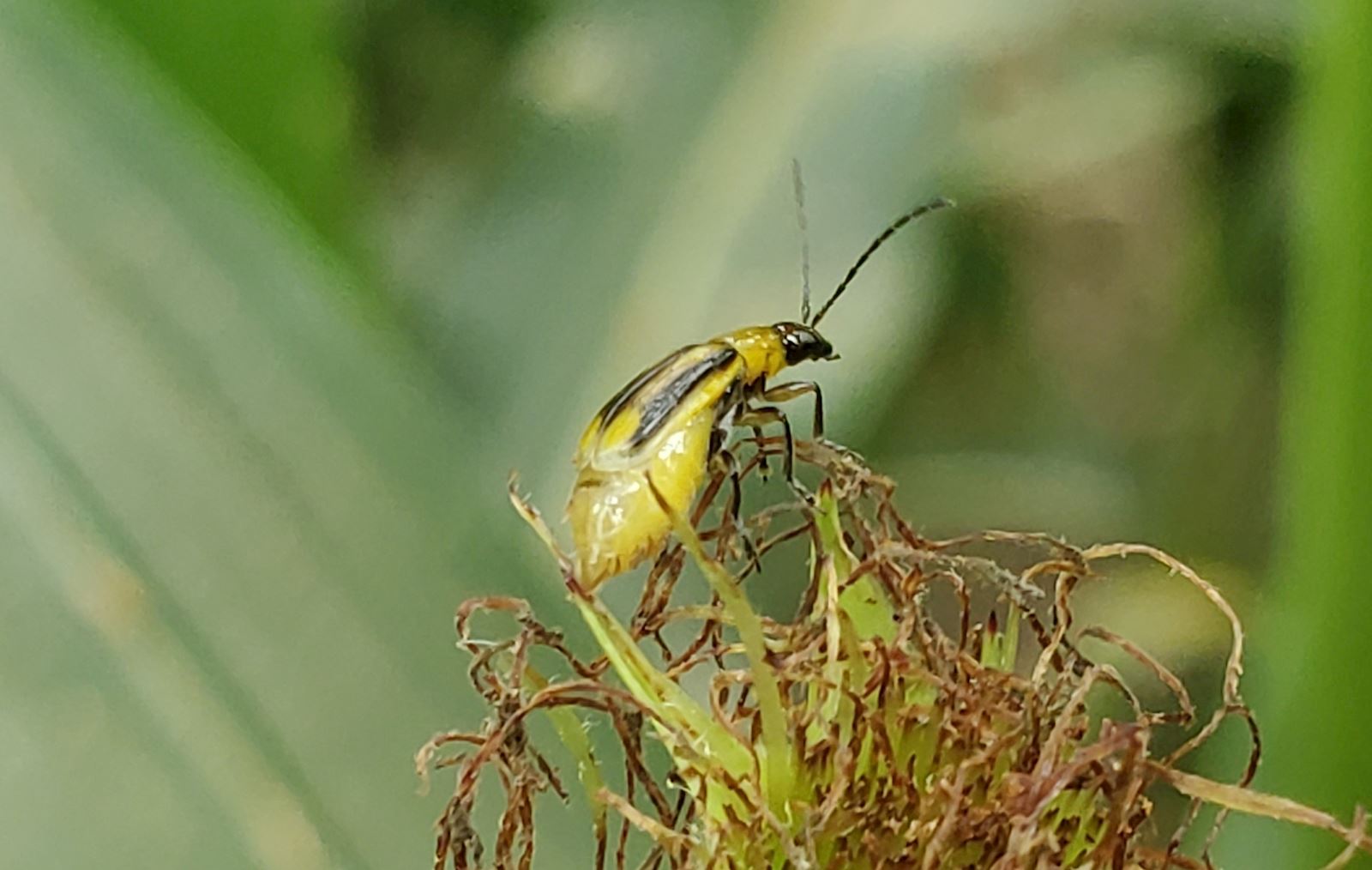July 30th, 2021
posted
by Andrew Blomme on 7/30/2021
in
Weekly Newsletter

July 30th, 2021
Corn Development
Corn pollination has progressed over the last 10-14 days in our area. With pollination nearing completion, we can evaluate how effectively an ear was pollinated. The simplest way to evaluate pollination is with a shake test. A shake test involves shucking an ear while keeping the silks intact and shaking it to determine how many silks are still attached to the ear. A single silk that is still attached to the ear represents a single unfertilized embryo that will not become a kernel. Ideally after a shake test, there will be zero silks left on the ear. The picture below shows two ears after a shake test. As you can see, the ear on top still has silks attached near the tip of the ear. This shows that those embryos have not been fertilized. Those embryos need to be pollinated yet or they will not develop into kernels. The ear on the bottom has no silks attached, showing that all potential kernels have been fertilized and this ear will develop the maximum amount of kernels possible.

In general, corn pollination has gone very well for our area. The biggest hinderance to pollination has been silk clipping caused by corn rootworm beetles. Silk clipping most commonly occurs in corn on corn fields with heavy rootworm pressure and can vary in its severity. The picture below shows very intense silk clipping damage. Clipping to this degree will limit the number of kernels per ear that develop and negatively effect yield.

Disease Update
Small pockets of white mold in soybeans were observed this week. White mold is a disease that favors the cooler and extremely humid environments that form below the canopy of soybean fields. When scouting for white mold, it is most likely to be found in low lying bottom ground and depressions in a field. The picture below shows white mold formation on a soybean plant. We will continue to monitor the development of this disease.

Insect Update
Now is one of the best times to begin to determine corn rootworm pressure for next year. Rootworm beetles have been mating and feeding for the last 2-3 weeks. Pregnant females, like the one pictured below, can be easily identified with their swollen abdomen.

These females will lay eggs in the soil that will overwinter and hatch next year to cause damage to our 2022 crop. Scouting for females today can help determine where they will be laying their eggs for next year. This knowledge is valuable because it can help prepare for next year avoid potential problems in the future.
Iowa State released an article in 2016 about measuring adult beetle numbers to make decisions for the next year. You can follow this link to the article: Iowa State University-Guidelines for Using Sticky Traps. The last paragraph talks about the beetle population thresholds needed to warrant action in these cases. From my observations, there are several corn on corn fields in the area that are well above these action thresholds and will require some control methods for next year.
Looking Forward
Scouting over the next 7 days will be focused on grain fill in the corn crop, pod set and seed development in soybeans, disease pressure and insect activity. All of these factors will have a direct influence on the yields we will see in the fall. Next week's newsletter will discuss these points and other observations from the field.